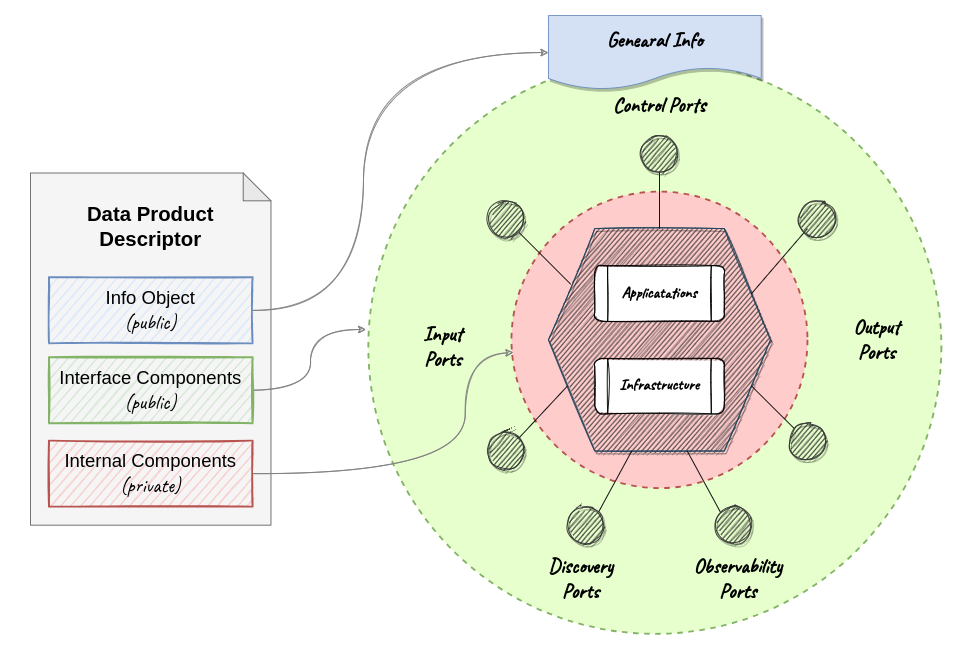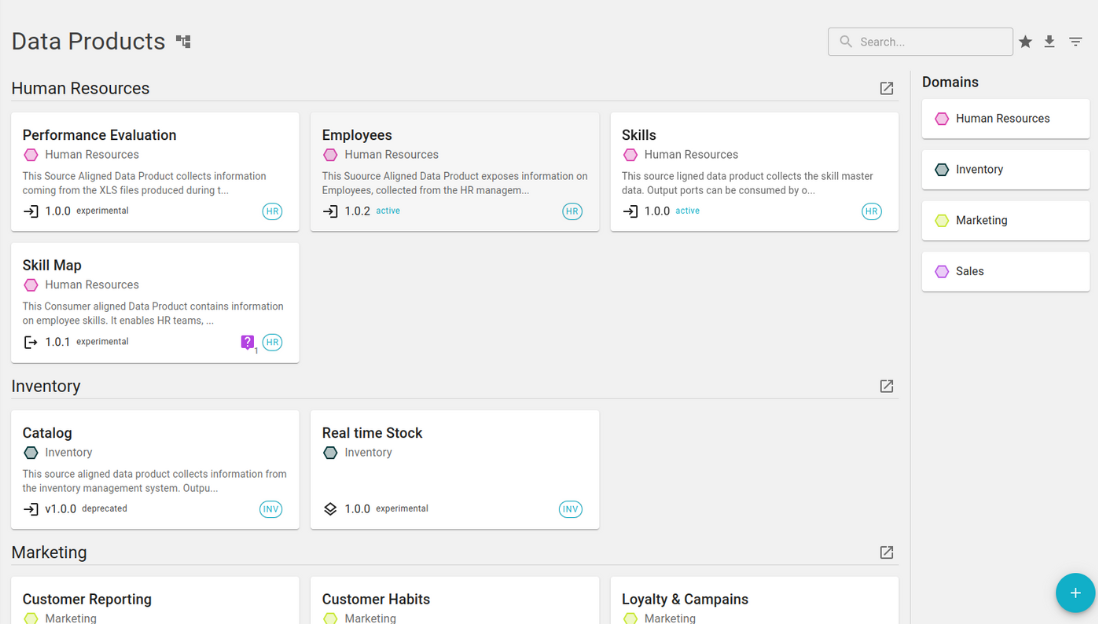Overview
In today’s data-driven landscape, organizations face the challenge of managing distributed data platforms effectively. As data ecosystems grow increasingly complex, traditional governance approaches struggle to keep pace, often leading to siloed data, compliance issues, and inefficiencies.
Federated governance offers a paradigm shift in how organizations approach data governance. Rather than centralizing governance responsibilities within a single team, federated governance distributes governance functions across various departments and teams, empowering them to take ownership of their data assets. This approach fosters a culture of accountability and collaboration, where stakeholders actively participate in data governance processes.
In this article, we’ll explore the process of building a data product marketplace by streamlining lifecycle operations. Our focus will be on utilizing Blindata and the Open Data Mesh Platform, an open-source project dedicated to providing a headless solution for managing data products’ lifecycle. By integrating these platforms seamlessly, we aim to demonstrate how organizations can establish a reliable marketplace for data products, characterized by efficient operations and standardized practices.
Data Product
Descriptor
At the core of establishing a data product marketplace is recognizing the pivotal role played by a data product descriptor. While it may be misconceived as merely a data contract, a descriptor encompasses far more than just a contractual agreement. It serves as a comprehensive definition of a data product, encapsulating vital metadata and specifications essential for its lifecycle management.
Open Data Product Descriptor Specification (DPDS) facilitates the definition of both interfaces and internal components of a data product. It acts as a comprehensive container for all metadata associated with the data product, providing a structured framework for its management and utilization.

The importance of the data product descriptor becomes even more evident in the context of standardization efforts. As organizations strive to standardize their data management practices, the descriptor serves as a crucial tool for ensuring consistency and adherence to established governance policies. By leveraging computational governance policies, organizations can systematically enforce these standards, promoting interoperability and reliability across the data product landscape.
Data Product
Lifecycle
In the journey towards building a data product marketplace, a crucial step involves defining the data product lifecycle. The data product lifecycle consists of the various phases encompassing the creation, development, deployment, management, and eventual decommissioning of data products. This encompasses creating a catalog or blueprint for data products, establishing standardized deployment pipelines, and orchestrating DataOps activities. Standardization within this framework offers a multitude of benefits, including the ability to integrate evaluation events, thus forming a quality gateway for data products.
The Open Data Mesh Platform (ODM) provides robust support for such scenarios by delineating distinct phases within the data product lifecycle. From the publication of data products to the execution of DevOps activities, ODM ensures a structured approach that streamlines operations and fosters efficiency.
Let’s explore the journey of a data product from its initial version publication to post-deployment validation.
-
The life cycle begins with the publication of a new version of the data product. This stage marks the creation or an update to an existing data product. In this step, the data product descriptor is validated and its metadata is stored in an internal registry.
-
Following version publication, a DevOps activity can be launched in this phase, and tasks are executed on the infrastructure provider. This involves deploying the data product to the designated environment, whether it be on-premises or in the cloud.
-
Then, we can analyze the results of the deployment process or we conduct post-deployment validation to ensure that the data product works as intended in its production environment.
Throughout each of these stages, we can evaluate policies to ensure compliance and adherence to governance standards.
Data Product
Catalog
As we move forward with our efforts to create a data product marketplace, the last step is to collect metadata and policy results to build a data product catalog. Our goal is not only to gather information but also to promote transparency in governance and facilitate future reuse.

The data product catalog becomes more than just a repository—it’s a gateway to collaboration and adherence to standards. By meticulously curating metadata, including data source, format, quality, and usage restrictions, organizations pave the way for seamless data discovery and reuse. Producers and consumers alike can easily search and identify relevant data products, promoting efficiency and reducing duplication of efforts.
It is important to maintain transparency in governance to ensure that teams follow the established standards and policies. Computational governance policies are used to evaluate compliance with regulatory requirements, security protocols, and internal governance standards. The results obtained from such evaluations are then integrated into the catalog, providing stakeholders with visibility into the compliance status of each data product.
By facilitating discovery for reuse and promoting governance transparency, organizations foster a culture of collaboration and accountability among both producers and consumers of data products. Teams are empowered to make informed decisions while adhering to governance standards, driving efficiency and innovation in data management practices.
Conclusions
In our exploration of building a data product marketplace with federated governance, Blindata emerges as a cornerstone solution. Blindata offers a comprehensive suite of tools and capabilities that seamlessly integrate into the data product lifecycle, facilitating the realization of our envisioned scenario.
One of Blindata’s key strengths lies in its computational policy repositories. These repositories provide a technology-agnostic framework for defining and enforcing governance policies across diverse data environments. By centralizing policies and making them easily accessible, Blindata ensures consistency and adherence to governance standards, irrespective of the underlying technologies used.
Blindata’s integration with the Open Data Mesh Platform plays a crucial role in our scenario. Open Data Mesh serves as the control plane, orchestrating various aspects of the data product lifecycle, including data product descriptor management, DevOps activities, and lifecycle governance. By leveraging Open Data Mesh alongside Blindata, organizations can establish a robust governance framework that spans the entire data lifecycle, from inception to retirement.
The data product catalog, facilitated by Blindata, serves as the experience plane in our scenario. It provides a user-friendly interface for data producers and consumers to discover, assess, and utilize data products effectively. With Blindata’s support, the data product catalog becomes more than just a repository—it becomes a collaborative platform where stakeholders can engage with data assets in a transparent and governed manner.
Blindata’s open API extends the possibilities even further by enabling seamless integration with existing solutions. This flexibility empowers organizations to leverage Blindata as a foundational building block for custom-made solutions tailored to their unique needs, workflows, and technologies. Whether integrating with legacy systems, third-party applications, or specialized tools, Blindata’s open API ensures compatibility and interoperability, allowing organizations to maximize the value of their existing investments while unlocking new possibilities in data governance and management.
